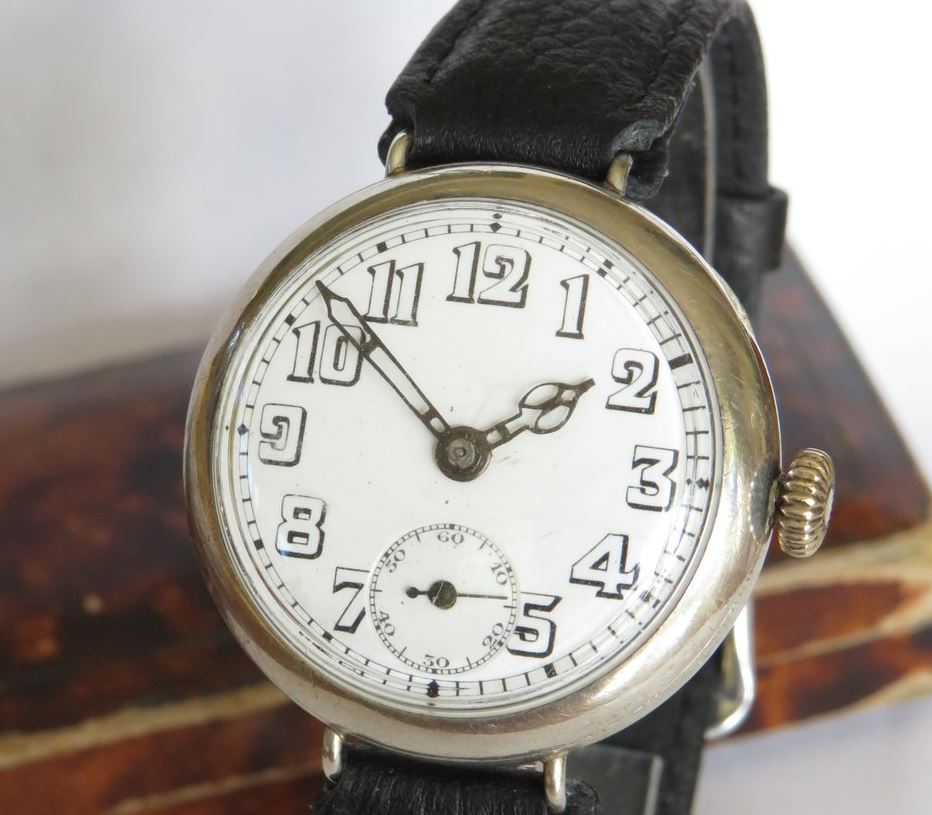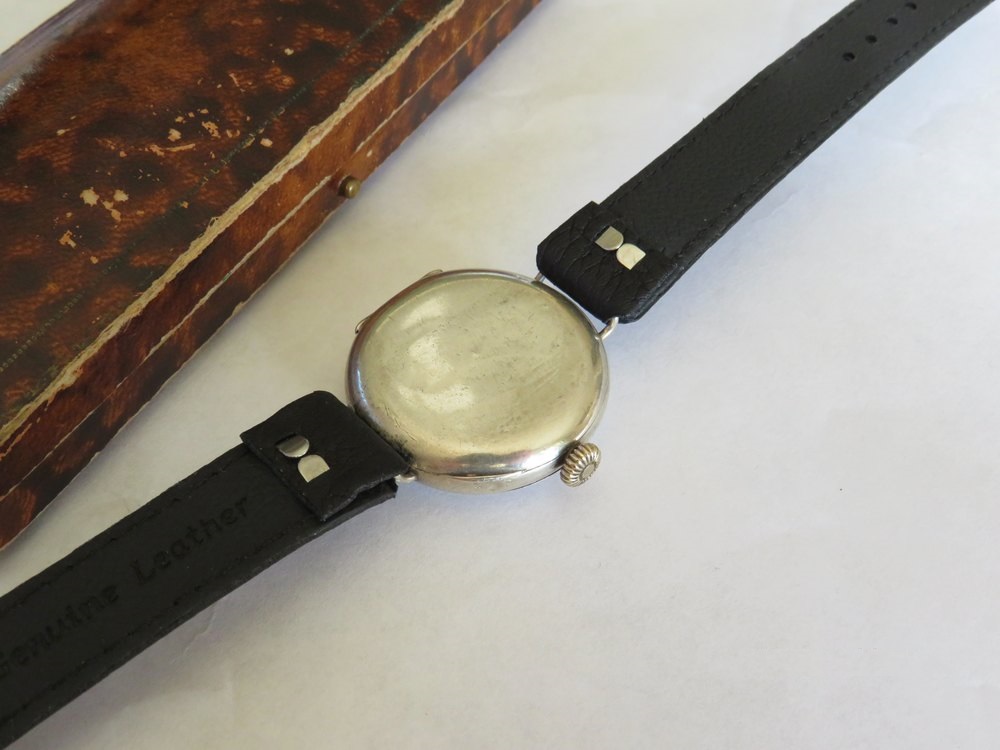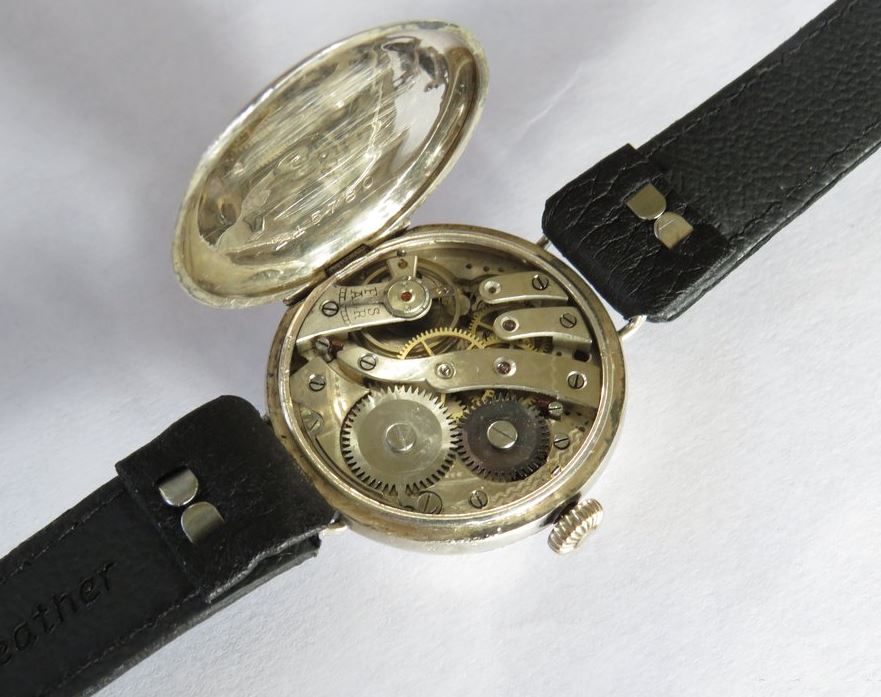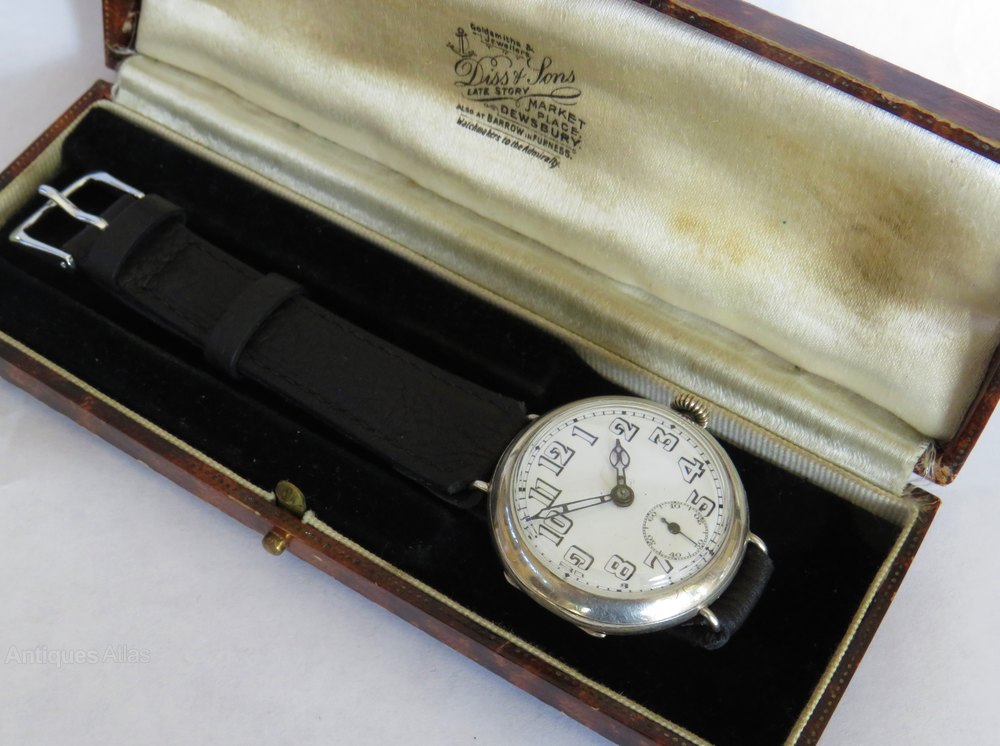Last updated on July 13, 2024
Late last year I was looking to add my first trench watch to my collection. I only collect antique (100 years old) plus watches, but all World War 1 (1914-1918) watches fall into this category. My criteria included, not necessarily in order of priority, presentation and condition, reliable timekeeping (+/- 2 – 3 minutes per day) and the watch must be dated from the period of the war. This Adolph Schild trench watch, c1917, meets most of these criteria. There is some uncertainty about the exact date.

Quality
I intend to wear all of my watches so the timepiece must be free of obvious cosmetic damage. I don’t mind the odd dent or scratch as it shows the watch has been used during its lifetime. It must also run and keep reliable time. I don’t expect it to be as accurate as a modern mechanical watch, but it needs to be reliable within a couple of minutes over a twenty-four hour period. There is no guarantee, even with a valid date, that any watch was ever inside a trench. You would need some serious provenance, such as military papers and records to be sure. Undoubtedly, such assurance would add considerably to the value.

Movement
This trench watch has a Swiss made movement by Adolph Schild, a noted manufacturer of ébauche movements. Schild formed his company in 1896 in Grenchen, Switzerland. By the 1920’s he was one of the largest movement manufacturers in Switzerland. He was one of the earliest manufacturers to realise that a mechanised system of production could produce standardised components that were easily interchangeable. Adolph Schild’s movements were greatly respected for their reliability.

The Vintage Wrist Watch Company believes the movement to be an AS Calibre 137. This is a reliable 15 jewel movement. It was often found in official wristwatches issued by the British War Department, circa 1917.
Condition
The watch measures 33mm in diameter excluding the winding crown and the fixed wire lugs. The case is silver and there are hallmarks inside the hinged case back although they are unclear, due to scratching. The Vintage Wrist Watch Company thought they included the London (import) hallmark and the date letter for 1917. However, the date hallmark was faded and they couldn’t be 100% certain. The front of the case is in good condition. The side has a small bruise and the case back has unevenness, these are barely noticeable.

The acrylic lens is in good condition. The dial had some very faint hairline cracks, which only show if you look very closely and from certain angles. The trench watch came with a new, fitted leather strap. As a bonus, the watch came with an antique presentation box from the jewellers, Diss & Son of Dewsbury. The jewellers, in this instance, did not make the watch, but merely acted as the retailers. That said, the original box is a nice touch.
Decision
This particular watch I was considering alongside another trench watch, which had clear hallmarks for 1917. In the end, I had to go for the timepiece that was guaranteed to be made in the war years. As I write this piece this watch has been sold and there is no doubt a proud owner of a World War 1 period trench watch. I just couldn’t make the purchase without the guarantee of age.

I have the same watch.
Hi Ashok, I hope you enjoy wearing your Adolph Schild trench watch as much as I do. Thanks for commenting, Jason
Hi,
Mine has a red 12.
Hi Peter, The 12 marker was often painted on early wristwatches. Typically, it was painted Red and in rarer cases Blue. An example of the red painted 12 can be seen on the Fonetainemelon silver trench watch from my collection. The reason for this was that a wristwatch uses a savonnette or hunter movement which is mounted in a Lepine or open-faced case. Normally, the 12 marker sits below the crown in an open-faced case, this is not practical for a wristwatch as in that position the crown would interfere with the lugs for the wrist strap. The painting of the 12 marker was short-lived as luminous paint was used to make trench watches readable in the dark conditions of the trenches. Thanks for commenting, Jason